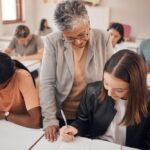The purpose of this longitudinal (2 years), ethnographic study was to identify persons or entities who act to protect refugee adolescents (Protective Agents), their capacities for doing so (Protective Resources), and how they do it (Protective Mechanisms) that promote their psychosocial well-being. Participants included a purposively sampled group of 73 Burundian and Liberian refugee adolescents and their families who had recently resettled in Boston and Chicago. Eight family and community capacities were identified that appeared to promote psychosocial well-being in the adolescent refugees. Protective resources that were strong (cultural adherence and faith), strengthening those protective resources that were weak (finances for necessities, English proficiency, social support networks) and initiating those protective resources that were the weakest (engaged parenting and educational support). Three categories of protective mechanisms: 1) Relational (supporting, connecting, belonging); 2) Informational (informing, preparing), and; 3) Developmental (defending, promoting, adapting). Educational Support — Parents, teachers, tutors, and the school encouraged the educational success of adolescent students by valuing education, talking about school days, offering homework assistance and support, problem solving, and mentoring. relational protective mechanisms were cited as being the most prevalent among the participants, followed by informational and developmental. The protective agents most actively involved with protective mechanisms were, from most to least active: school and agency; followed by family and church; youth (peers); health and mental health.
Diversity initiatives in the US workplace: A brief history, their intended and unintended consequences
Diversity initiatives are designed to help workers from disadvantaged backgrounds achieve equitable opportunities and outcomes in organizations. However, these programs are often ineffective. To better

